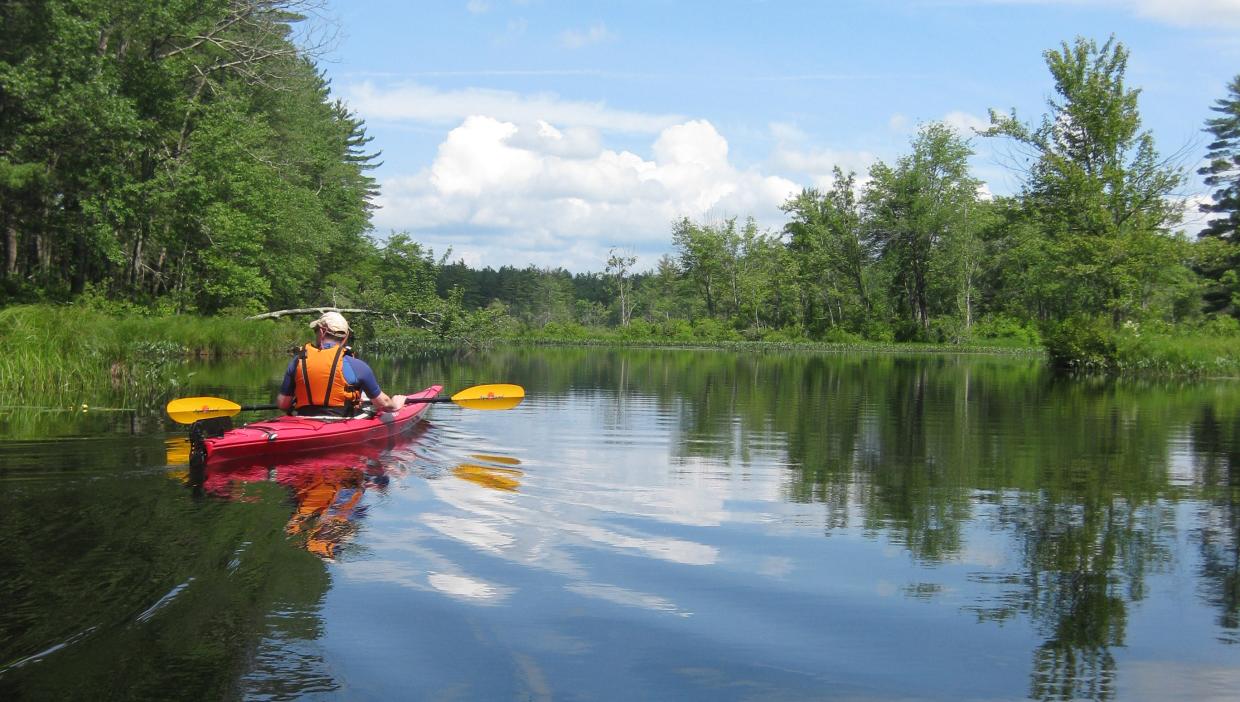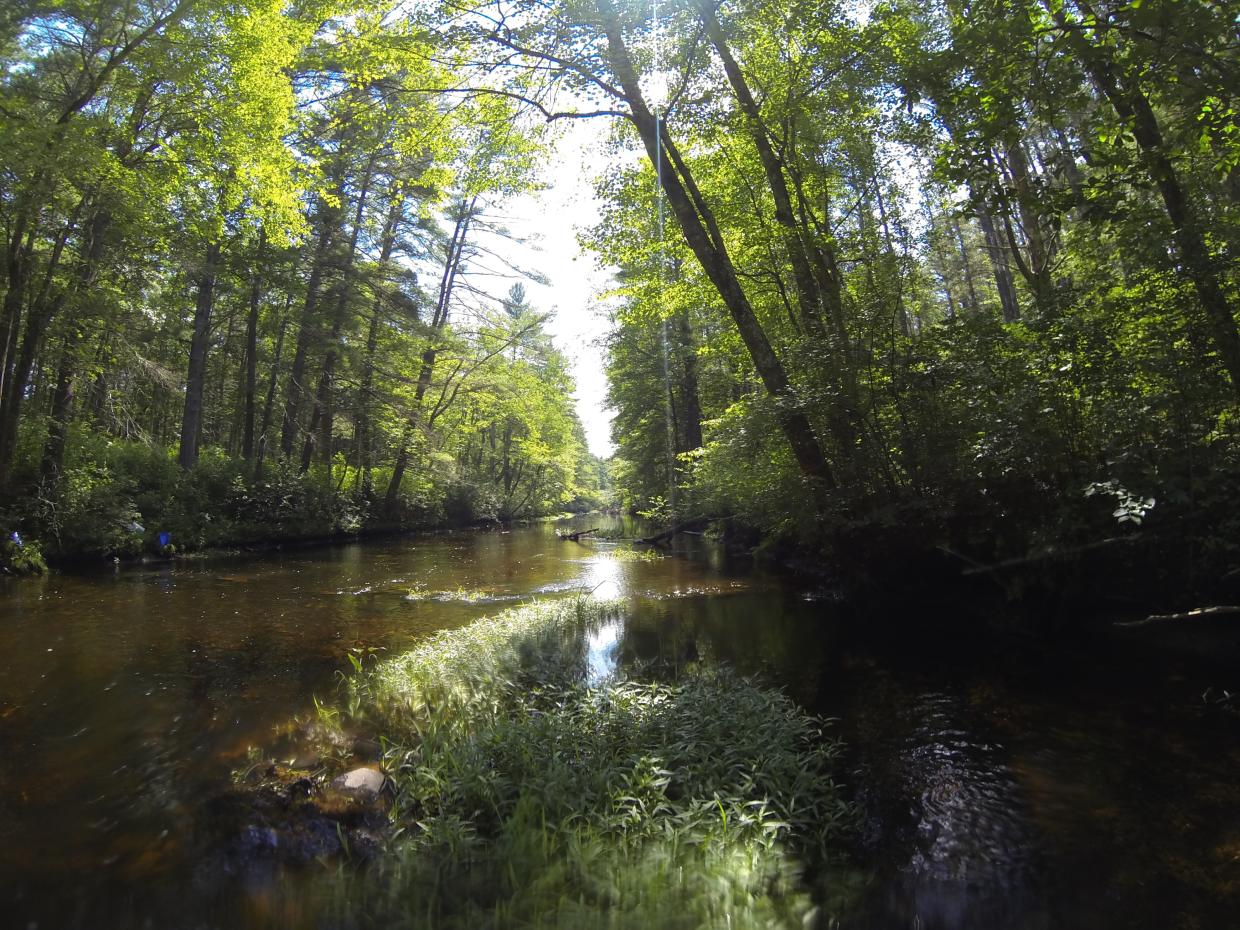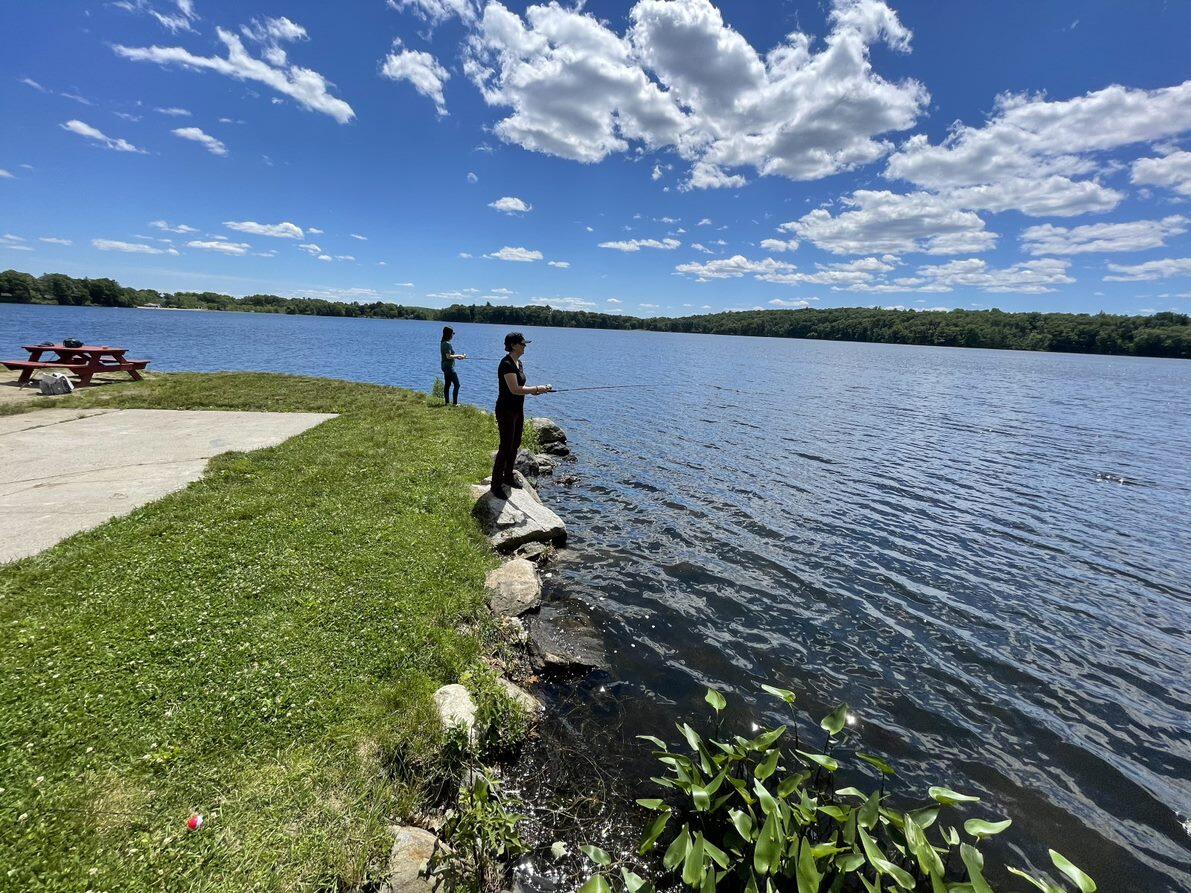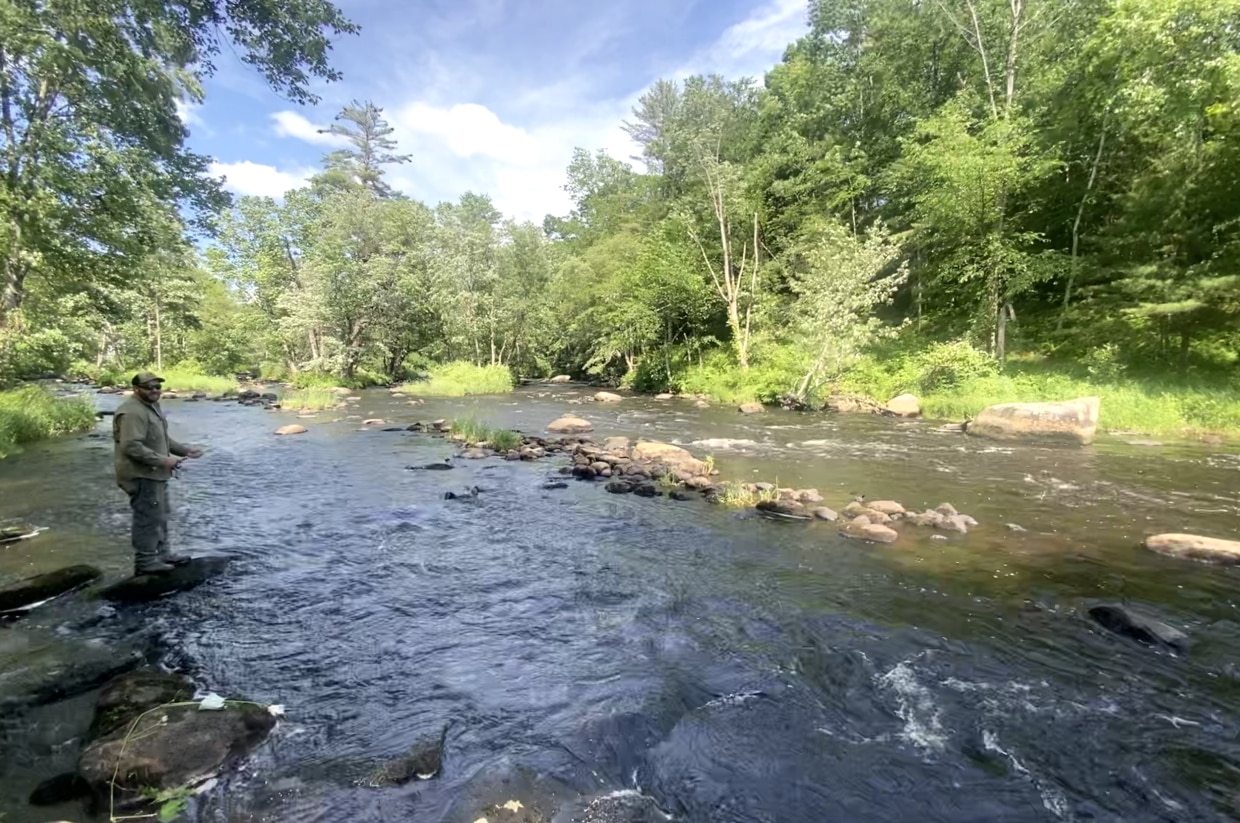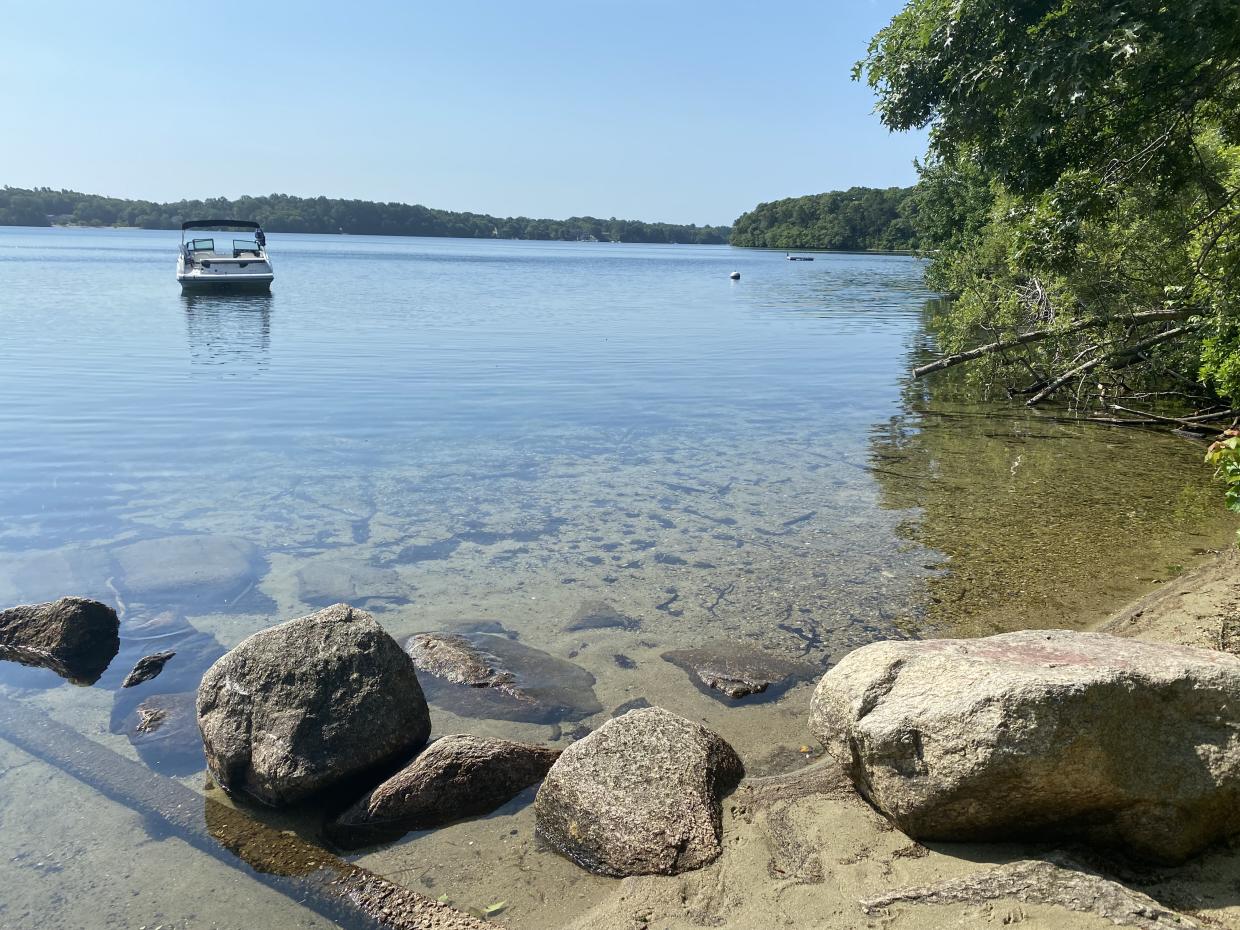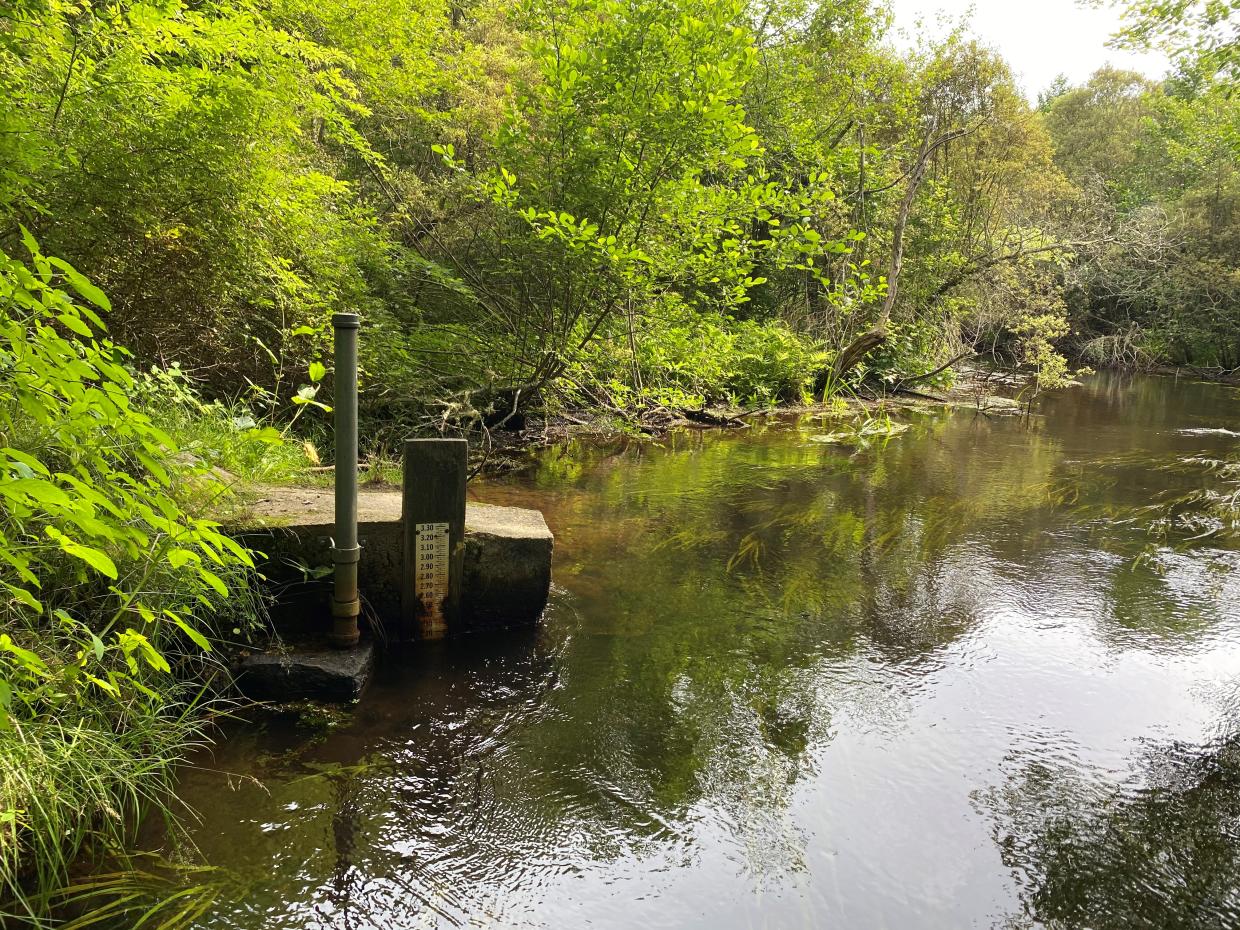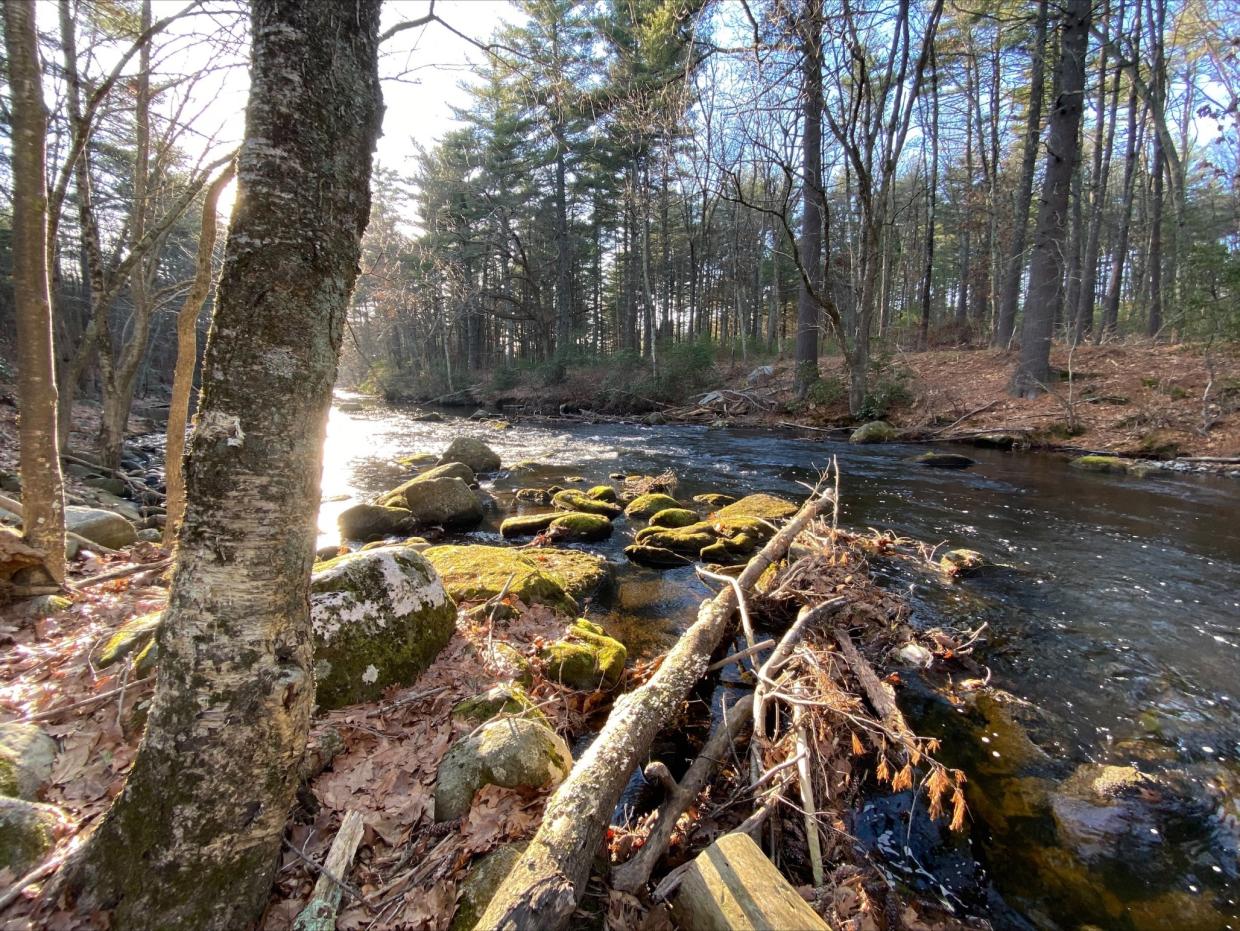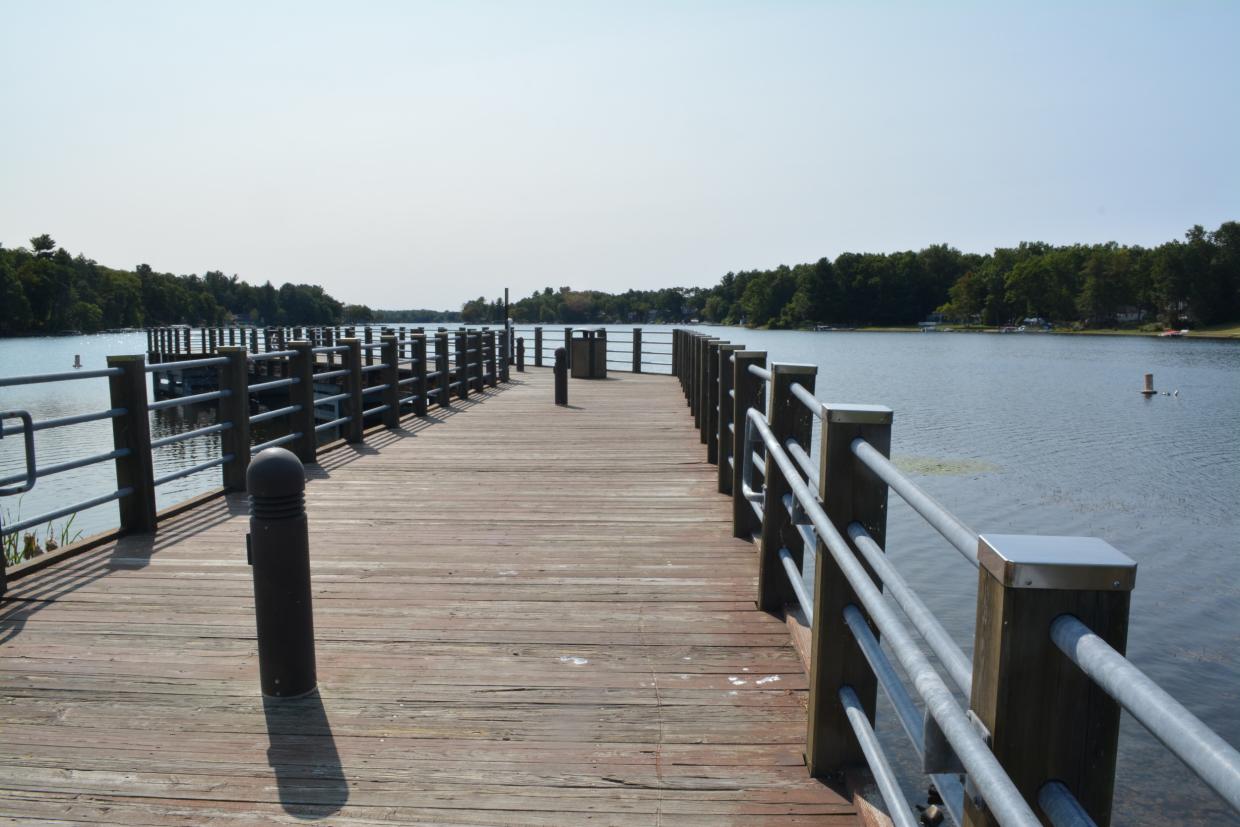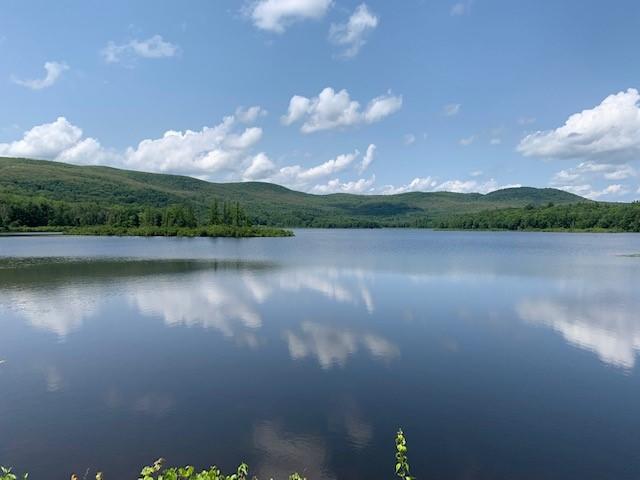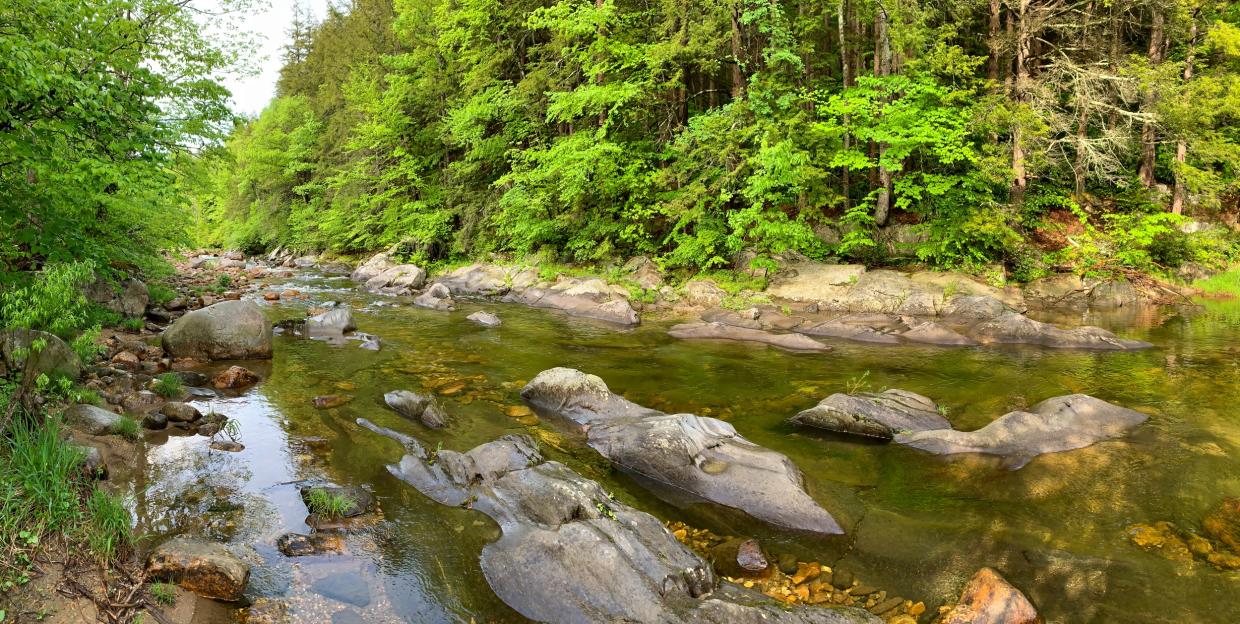Love to fish? Massachusetts offers exceptional freshwater fishing in spectacular settings. Many fishable ponds, lakes, and rivers are located within or very near WMAs that provide opportunities for walking, hiking, and wildlife watching. Remember, if you’re 15 or over, you need a fishing license. Buy your fishing license online.
Locations
Squannacook River & Squannacook River WMA
Towns: Ashby, Groton, Shirley, Townsend
The Squannacook River is an exceptional coldwater stream. Many tributaries hold wild brook trout and the main stem is stocked with trout in spring and fall and. For a bit of fun, try fly-fishing the rapids accessed from the Townsend Road parking area in Groton. When you’ve had your fill of fishing, explore the Squannacook River WMA—a patchwork of parcels that follow the river from its headwaters near the New Hampshire border to its confluence with the Nashua River. The bottomlands, oxbow wetlands, forests, and grassy openings of this WMA can be accessed using several unmarked trails. Walk along the river and watch for kingfishers, great blue herons, green darner dragonflies, emerald jewelwing damselflies, as well as barred and great-horned owls. Look along the shoreline for river otters that feed on freshwater mussels and overhead in the hemlocks for an occasional porcupine. If you explore the river from a canoe, remember to leave downed woody debris in place since it provides vital habitat for river creatures.
Plan your trip: Squannacook River WMA map
Nissitissit River & Nissitissit River WMA
Town: Pepperell
The nearly two-mile stretch of the Nissitissit River from the New Hampshire border downstream to the Prescott Street bridge is a catch-and-release, fly-fishing-only area. MassWildlife stocks trout in the river each spring and fall. The excellent water quality and cool water temperatures can support trout in all but the hottest summer months, at which point fish take refuge in deep pools and cooler tributaries. Sections of the river and some tributaries support populations of wild brook trout. The river also holds white suckers, common shiners, yellow bullheads, chain pickerel, largemouth bass, pumpkinseeds, and American eels—as well as an impressive variety of freshwater mussels. Stow your rod and check out the Nissitissit River WMA. The 600 acres of forests and wetlands provide excellent bird watching, wildlife viewing, and nature study opportunities. Listen for the distinctive breeding vocalizations of the common yellowthroat, yellow warbler, and black-capped chickadee and watch the skies for bald eagles.
Plan your trip: Nissitissit River catch-and-release area information | Nissitissit River WMA map
Chauncy Lake, Little Chauncy Pond, & Wayne F. MacCallum WMA
Towns: Westborough, Northborough
Chauncy Lake and Little Chauncy Pond offer excellent fishing and can be accessed from shore or by boat. Anglers can expect to catch a variety of warmwater fish species in both waterbodies, including largemouth bass, chain pickerel, black crappie, panfish, yellow and white perch, and brown and yellow bullhead. When it’s time to stretch your legs, you can stroll the pond shorelines, small streams, forests, and fields of the adjacent Wayne F. MacCallum WMA. The shrubland and grassland habitats attract butterflies and many songbirds in spring and summer. Wood ducks and hooded mergansers often use the nest boxes at the smaller ponds. Watch for river otters, beavers, and turtles. You may spot old foundations from the former Lyman School for Boys, which operated a school and farm here until 1971.
Plan your trip: Chauncy Lake information | Little Chauncy Pond information | Wayne F. MacCallum WMA map
Millers River & Millers River WMA
Towns: Athol, Orange, Phillipston, Royalston, Wendell
MassWildlife stocks trout in the Millers River in the spring and fall. In the summer months, trout take refuge in cooler tributaries and the main stem of the river becomes more suitable for warmwater fishing. Anglers have a chance to catch brown, rainbow, and brook trout, along with smallmouth bass, rock bass, bluegill, pumpkinseed, or redbreast sunfish. Sections of the river are catch-and-release only areas. If you’re feeling adventurous after fishing, explore a section of the rugged Millers River WMA. Visitors will find large, forested areas along with streams, and wetlands. Watch for deer, foxes, raptors, ravens, beavers, and even moose! Experienced paddlers can access the river at several places within the town of Athol.
Plan your trip: Millers River catch-and-release area information | Millers River WMA map | Millers River boat access information
Ashumet Pond, Johns Pond & Frances Crane WMA
Towns: Mashpee, Bourne, Falmouth
Fish Ashumet Pond or Johns Pond from a car-top or trailered boat. MassWildlife stocks both ponds with trout in the spring and fall. In Ashumet Pond, trout can be found in the summer months in the cooler, spring-fed norther end of the pond. Ashumet Anglers also target largemouth bass, smallmouth bass, yellow perch, white perch, and sunfish. Johns Pond is popular with largemouth and smallmouth bass anglers. White perch, yellow perch, and sunfish are also regularly caught.
Don’t overlook nearby Frances A. Crane WMA, which contains some of the region’s most diverse wildlife habitats. MassWildlife has completed extensive restoration of the unique pine–oak woodlands and sandplain grasslands at this property. On your visit, watch and listen for eastern whip-poor-wills, grasshopper sparrows, eastern meadowlarks, upland sandpipers, northern harriers, short-eared owls, American kestrels, eastern bluebirds, blue grosbeaks, red foxes, eastern coyotes, purple tiger beetles, and many types of moths, butterflies, and native pollinators. A hike to the top of the glacial moraine, called “Mt. Zig” by locals, offers ocean views from one of the highest points on Cape Cod.
Plan your trip: Ashumet Pond information | Johns Pond information | Frances A. Crane WMA map
Quashnet River & Quashnet River WMA
Towns: Falmouth, Mashpee
The excellent water quality and cool water temperatures in the Quashnet support coldwater fish year-round including a relatively large population of wild eastern brook trout. Some of these brook trout leave the freshwater and enter the saltwater environment to live and grow before returning to the river. These sea-run, or “salter,” brook trout reach considerably larger size than the stream residents. Alewife, blueback herring, American eel, and white sucker are also present in the Quashnet. Note that the entire river, from its origin at the Johns Pond outlet to the tidal waters of Waquoit Bay, is a catch-and-release area with only artificial lures permitted. The Wildlife Management Area surrounding the river represents one of the earliest MassWildlife land purchases aimed at protecting stream habitat. Visitors may notice remnants of commercial cranberry bogs transitioning to natural forest and shrubland. While walking the shoreline, you may observe a variety of songbirds and waterfowl as well as fish-eating birds like great blue herons and kingfishers. Some lucky visitors may even catch a glimpse of a river otter.
Plan your trip: Quashnet River catch-and-release area information | Quashnet River WMA map
Swift River & Herman Covey WMA
Towns: Belchertown, Ware
Beat the summer heat by fishing the cool waters of the Swift River! The Swift’s consistent water flow and cold temperatures provide great trout fishing opportunities throughout the year. MassWildlife stocks the river with trout in the spring, summer, and fall. Wild brook trout thrive here as well. Note that a section of the river is catch-and-release only during certain times of year. Anglers may also catch largemouth bass, yellow perch, and chain pickerel.If you have time, explore the forested hills, meadows, and beaver ponds of Herman Covey WMA on foot or take in the scenery as you float the river in a canoe or kayak. Look and listen for American woodcock, ruffed grouse, prairie warblers, eastern towhees, and field sparrows in the grasslands and regenerating young forests. Watch wetland areas for waterfowl, wading birds, beavers, and white-tailed deer. MassWildlife is conducting a major barrens restoration project on the WMA to expand globally rare wildlife habitat. Barrens are home to eastern whip-poor-wills, a wide variety of native bees, and an impressive suite of rare moths and butterflies.
Plan your trip: Swift River catch-and-release area information | Herman Covey WMA map
Lake Congamond &Southwick WMA
Town: Southwick
Lake Congamond is comprised of three connected basins. The lake is renowned for its largemouth bass fishery, which commonly produces fish exceeding 5 pounds. Smallmouth bass, panfish, yellow perch, chain pickerel, black crappie, and stocked brown trout are regularly caught. The town of Southwick manages two public boat ramps; shoreline access is available near the ramps. When you’re done fishing, head over to Southwick WMA and wander the expansive grasslands and shrublands. Look for grasshopper, clay-colored, and vesper sparrows along with eastern meadowlarks, American kestrels, and eastern whip-poor wills. The grasslands support a wide variety of butterflies, moths, tiger beetles, and native bees. MassWildlife has conducted extensive grassland restoration and has created and enhanced vernal pools within the property to benefit declining amphibians.
Plan your trip: Lake Congamond information | Southwick WMA map
Three Mile Pond & Three Mile Pond WMA
Town: Sheffield
Three Mile Pond offers excellent bass fishing in a serene setting. Aquatic vegetation and submerged stumps and trees offer plenty of structure for bass and other warmwater fish including chain pickerel, yellow perch, brown bullhead, and sunfish. A canoe, kayak, or small boat is the best way to fish Three Mile Pond, and launching is easy thanks to recent improvements to the boat access and parking area. Ironworks Brook, the outflow of Three Mile Pond, is a coldwater fishery and contains brown trout. Take time to explore the surrounding 1,000+ acre Wildlife Management Area. Watch for wildlife as you walk the outskirts of the extensive beaver impounded marsh to the north of the pond. Or seek the shade of mature forests in the steep hillsides to the north and west of Brush Hill Road. Grasslands and shrublands along Cross Road are maintained for wildlife habitat.
Plan your trip: Three Mile Pond WMA map
Middle Branch of the Westfield River and Fox Den WMA
Towns: Chester, Middlefield, Worthington
The Middle Branch of the Westfield River has more than 10 miles of cool, clear water accessible to anglers from dozens of locations. The smaller Middle Branch fishes more like a stream than the West or East Branches and allows comfortable wading in most flow conditions. Cold water streams enter from the east and west slopes adding volume and cold water as the river flows towards Littleville Reservoir. Deep ledge and corner pools can be found between riffles in the Middlefield and Chester sections of the river. The pleasantly rural East River Road runs parallel to the Middle Branch where anglers can pull off the road in many locations and travel up or down river for miles. Take a break from casting and explore a section of Fox Den WMA bordering or encompassing the river throughout much of its reach. This 5,000-acre property is one of MassWildlife’s largest WMAs. Visitors can walk the forested river valley and hemlock ravines for a real sense of wilderness.
Plan your trip: Fox Den WMA map
